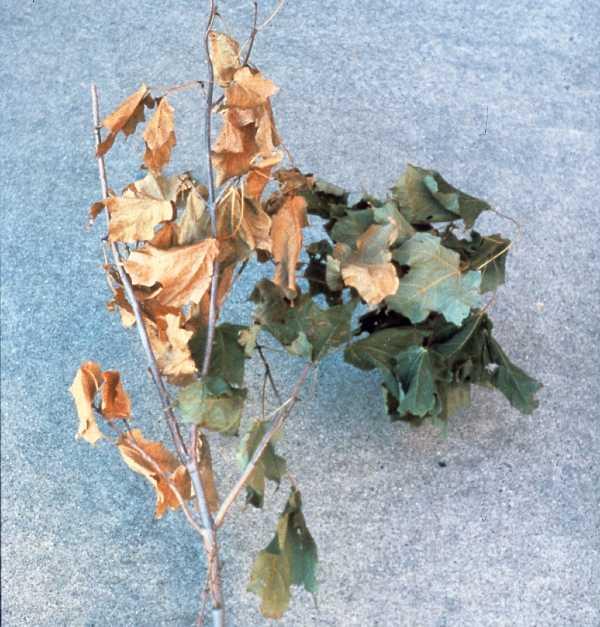Key points
- Verticillium wilt is a common disease problem occurring on trees and shrubs caused by the common soil fungus Verticillium spp.
- Some commonly grown shrubs that are susceptible to verticillium wilt include azalea, daphne, hibiscus, osmanthus, lilac, photinia, rose, spirea, viburnum, and weigela.

Photo: Joseph OBrien, USDA Forest Service, Bugwood.org
Symptoms
- Early symptoms usually start as a yellowing or off color of scattered branches.
- These symptoms are usually followed by wilting and sudden dieback of infected limbs especially during drought or in the heat of summer.
- Eventually, the entire plant may wilt and die. However, established shrubs may live for years with dieback symptoms before succumbing.
- Sunken cankers with bark splitting may develop on infected limbs.
- A partial list of resistant shrubs includes dogwood, firethorn, flowering quince, holly, and rhododendron.

Management
- Some cultural practices can help to prolong the life of infected plants in the landscape.
- Prune out wilted and dead branches.
- Avoid high nitrogen fertilizers.
- Water during drought and use mulches to conserve water and control weeds.
